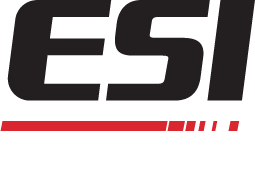Are EB Cured Inks Safe For Food Packaging
Are EB Cured Inks Safe for Food Packaging?
When it comes to food packaging, there are several challenges that companies face to protect food items all the way through the supply chain. Environmental compliance and cost are also factors, as is following governmental guidelines and regulations when it comes to the ink that’s used on food packaging.
FDA regulations state that all food additives must comply with its food additive guidelines, in order to be considered safe, which is precisely the point that many decision-makers drop electron beam or EB cured inks from the conversation.
Common EB Cured Ink Food Packaging Misconceptions
Curing inks via electron beam consists of emitting a wave of accelerated electrons toward the web, which are absorbed by the wet ink. The curing process happens instantly, without the need for a photoinitiator. Using an electron beam to cure inks that are to be used in food packaging may sound like a disaster waiting to happen, but the misconceptions far outweigh any legitimate safety concerns. Here are some common misconceptions about ebeam cured inks:
EB Ink Curing Is Dangerous – It’s a common misconception that EB curing is a dangerous practice, but the reality is quite different. Electron beam technology:
- Produces little to no volatile organic compounds (VOC’s)
- Has low systemic toxicity
- Isn’t absorbed into the skin like solvents
- Is non-carcinogenic
- Is FDA approved for contact with all food types, as per 21 CFR.
EB Equipment Is Not Cost-Effective - The cost of equipment causes many companies to shy away from making the move to EB ink curing, but upon closer review, the cost-differential is much less than you think. Electron beam drying produces less material waste, the process can be carried out by fewer employees and the environmental impact is less than with solvent-based inks. Energy curable inks cost more per volume unit, but these costs are offset by the reduction in consumption.
Space is another factor when considering the cost of EB curing in your facility. A drying oven for conventional curing may require up to 1,000 square feet of space, while the instantaneous drying of electron beam curing may require only 100 square feet of space. This extra space can be allocated to other equipment or processes designed to improve the overall efficiency of your operation.
Keeping an Eye on Future Business Needs
Moving forward, EB ink curing may be the more profitable and practical food packaging solution, due to the trend toward more flexible food packaging, shorter print runs and a greater number of SKUs. EB curing allows for easier customization, and since it takes less than one second of exposure to cure the ink, it is better suited to the future of food packaging.
EB cured inks provide a safe, efficient, cost-effective and environmentally friendly alternative to the conventional, solvent-based model. Give us a call today so we can explain why our electron beams are the best in the industry, and why making the switch to EB curing is just good business.

